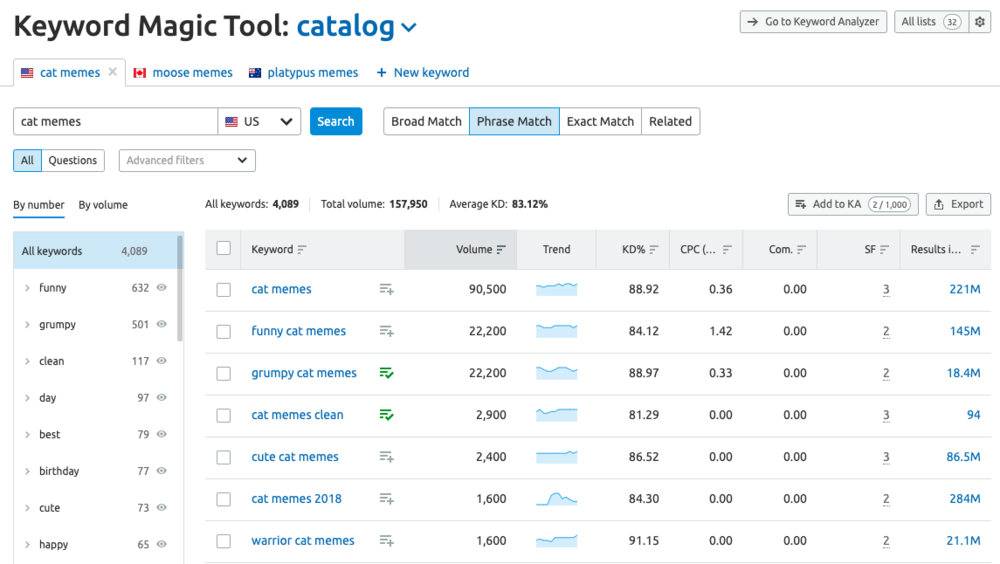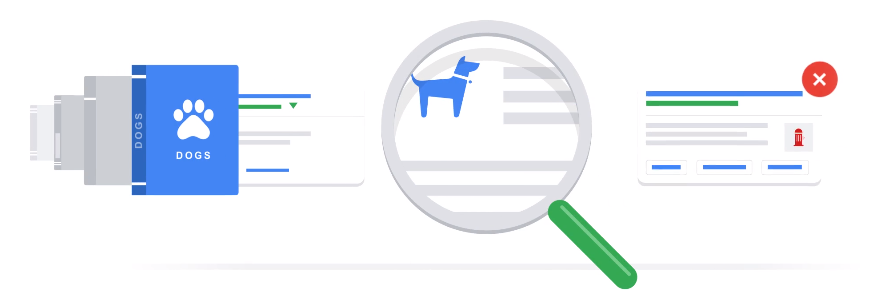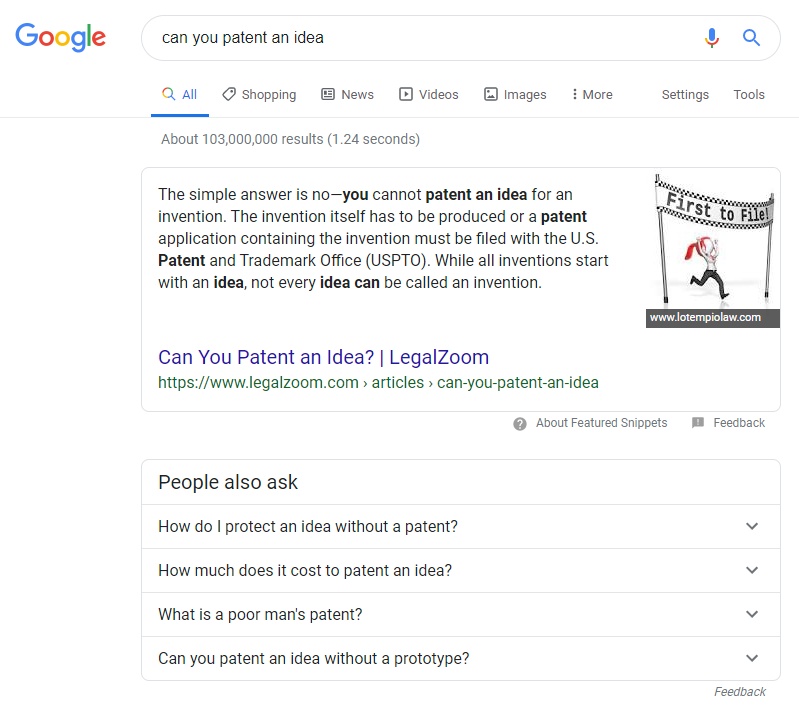Blog Writing Guidelines for Successful SEO Results
Have you ever written what you thought was a great blog post only to find it gets zero visibility on Google? What if you could follow guidelines that would help those posts reach Google’s first page and give you excellent content marketing fuel? We have your solution, with a model of writing blog posts for SEO. By following these guidelines, you can hit all the marks for a great blog post, every time, and make the entire process quick and easy.
Your blog content should answer a question, solve a problem, entertain, or provide information. It must be clear, accurate, shareable, and easy to reference. It should also achieve a goal, whether driving traffic, converting leads, or another action that meets your objectives. Our guide identifies each aspect of a quality blog post so that you do not miss a single element.
Our blog post guidelines put the reader first. They consider his or her intent and help you organize your thoughts so that you can match your ideas to your content strategy. The result is content that appeals to readers and performs well in search engine results pages. Let’s explore the common elements of high-performing blog content for SEO.
In this guide:
Understand the Brand's Story
According to Edelman’s Brandshare study, while 87 percent of customers wanted more meaningful relationships with brands, most felt that brands didn’t reciprocate. Customers want mutual understanding and loyalty. And this starts by sharing enough with them that they appreciate where the brand has come from, where it is now, and where it’s going. To get deeper into the brand story, you may find it useful to ask three straightforward but key questions:
Who are they?
Why do they do what they do?
What problem do they solve?
Think about feelings and attitudes, challenges, and how the people in the business overcame them. Character should take center stage, here, not plot, so think about the personalities involved. When understanding, creating or sharing a brand’s story, think about the brand’s problem, its solution, and its success. This approach will give you a strong beginning, middle, and end, the structure of great storytelling.
Know the Brand's Writing Style
Your knowledge of the brand will inform your writing style. Many brands will have already established a way of writing. To examine the components that make up a brand’s writing style, it’s useful to use the same categories as Grammarly’s goal-setting function. This function tailors writing suggestions based on the user-defined audience and goals. It considers five components of a brand’s writing style:
This screenshot is from grammarly.com’s goals.
Audience – is your target reader knowledgeable about this subject, an expert, or does he or she have general knowledge of the area?
Formality – is informality – such as slang and casual expressions - appropriate, should you be formal, or is it best to fall between the two?
Domain – is your brand in the realm of academia, business, technical, casual, creative, or would it be considered general. Each readership will have expectations of content, its rules, and how strictly you should be following them.
Tone – What is the voice of the brand? How should the brand make its customers feel? Grammarly divides tone into: neutral, confident, joyful, optimistic, friendly, urgent, analytical, and respectful. Note that you can use several of these elements at once.
Intent – this is very important and particularly helpful to focus any piece of writing. Grammarly wants you to know if you are informing, describing, convincing, telling a story, or some combination of the four. We agree that you should know this too.
Get to Know the Target Audience
Always write with the target audience in mind to personalize your voice and messaging. Begin your content strategy by identifying your ideal audience. As an example, let’s say your reader prefers social media as a communication method. When it’s time to share your company’s contact information, therefore, you might include your Facebook link instead of relying on a phone number. This is only one way you can personalize your content by identifying your target audience’s preferences from the start.
By understanding your visitors, you can create content that speaks directly to them. Your customers may prefer long-form, in-depth content published several times a week. Another firm’s customers prefer snappy articles published several times a day. Your audience’s needs and desires inform what content you produce, how you present it, and how you will communicate with them.
Outline:
what your visitors do,
how they want to improve,
their challenges and pain points, and
why they need your organization to address these issues.
Bonus Tip: Try HubSpot’s Make My Persona Tool
Select a Primary Keyword
While you should write your article for the reader and not primarily as a keyword delivery system (learn about keyword stuffing), effective bloggers create a keyword list. The primary or focus keyword should be in the headline and at least once in the body, near the top of your post. Various tools are available for generating keywords. Bing’s keyword tool is an excellent free tool with accurate stats, using as much as six months of data to suggest great keywords for your business.
Google’s Keyword Planner is also a great place to start generating keywords. Think about the words your ideal customer is likely to use to find products or services like yours and pump them into Google’s keyword tool. It will tell you how many people are searching for that keyword, and it will suggest alternatives you can use to extend your reach. Google itself is also useful for researching keywords. Type your keyword into the search bar, and its auto-suggest function will furnish you with popular searches that are similar.
KeywordTool.io is helpful for finding long-tail keywords. Long-tail keywords are phrases, typically containing three or four words. They are useful to you because they are very specific to what you are selling. People searching using these words know what they want. If you can get them to land on your site, there is a good chance that you will be able to connect with them.
This screenshot is from the article “How to Use SEMrush for Keyword Research”
Keyword research is vital to your success, but don’t lose sight of creating authentic, valuable content. Incorporate keywords, but don’t stuff them in. For more on keyword tools for generation, optimization, and comparison, check outthe 10 best keyword research tools and their top feature. Then come right back here to learn about the next step: creating in-demand topics for your visitors.
Bonus Tip: Use your primary keyword in your headline and body text. Then proliferate your sub-topics and/or paragraphs with semantically related keywords. These are keywords related to the concept of the main keywords. If you are writing with ‘SEO blog writing’ as a keyword, for example, ‘keyword research’ would be a semantic keyword. Using semantically related keywords helps address the deeper meaning and intent of the visitor's search.
Choose an In-Demand Topic
If you want your content to rank well in search engines, it is wise to write on topics that are already in-demand. Your keyword research should help you define what people are looking for. The key is to offer a fresh perspective or a company-specific angle to an in-demand topic.
Remember your target audience. At this point, you should refer to that part of our blog post guidelines. How can you tailor the in-demand topic to your ideal visitor?
Learn more about choosing in-demand topics: Best Tools for Generating Blog Post Ideas That Boost SEO
Optimize the Headline
Now, look at your keywords and your target audience - there’s a reason you deal with these first! - to optimize your headline. Many SEO professionals will tell you that the headline or title of your page is the most crucial element. That’s because this will show up as the prominent blue link in search results. Search engines are particularly interested in the contents of headlines.
A quality headline is essential. Your viewers will click on it or reject it based on how well written it is. You need to optimize it for SEO while offering an answer, advice, an opportunity, or another compelling reason to click.
Learn more about headline optimization: Best Free Headline Analyzer Tools for Quickly Writing Better Titles
Think of Search Intent
Search Intent (also known as “User Intent”) is the main goal a user has when typing a query into a search engine. You should try to keep this in mind at all times. Frequently ask yourself if the user is getting what they came for. If not, where does your post lose them? How can you change things to make it more focused and more valuable to your viewers?
Most searches are informational, navigational, commercial, or transactional. Consider why your customers and potential customers are searching. Create content to match. For example, consider the following searches and how a business might write or tweak content to match each intent:
It’s all about kimonos, but each time there is a different user intent. Writing content focused on a specific user intent can send posts shooting up Google’s rankings because they will be more useful to Google’s users. A post’s usefulness is critical to its success. Create posts that solve problems and keep the posts focused on user intent by solving one problem per post.
Learn more about search intent: Why and How to Optimize Content for Search Intent
Avoid These Low-Quality Content Signals
Expertise, authority, and trustworthiness (EAT) have long been an important part of web content, even before Google gave us this tasty acronym. The search company’s updated guidelines say that the quality of main content is now judged primarily in the following terms.
Time
Effort
Expertise
Talent/skill
To be considered high quality, Google wants to know that these factors went into the creation of the page. Evidence that content creators have spent time and effort on a page will also inform Google’s raters’ estimation of a page’s expertise, authority, and trustworthiness. Evaluators will also consider demonstrations of expertise and talent or skill.
According to Google, the lowest quality content is content that fails to serve its purpose. Google’s raters will be looking out for the following signs of low-quality content and so should you.
Inaccurate content, including unverified facts, exaggeration, or misinformation regarding established facts.
Poor editing and noticeable first drafts.
Content without sources or that contains fake sources.
Intrusive ads or other content that distracts from the main content.
Effortless paraphrasing of another source.
Redundancy in the form of repetition of well-known facts.
Unnecessarily verbose content.
Misleading titles that lead to confusion or disappointment.
Context plays a part in whether Google’s raters will consider a page to have high-quality or low-quality content. The firm has established different quality standards for personal or hobbyist websites compared to business websites produced by professionals. Likewise, raters’ expectations of a small local business website will be unlike what they expect from a multinational corporation.
Take Google’s example. Determine the quality of your pages by evaluating their type, their intent, and how well they serve their audience. Consider whether your pages took time, effort, expertise, and talent/skill to create. And make sure that you are delivering what you say you will.
Think About the Problem You Are Solving
Each blog post should be providing the reader with a solution to a problem. So it’s a good idea to think about your blog post as an answer to a question. You can deliver your brand message and attempt to connect with your customers, but the heart of your post should be solving their problems.
Use a Consistent Paragraph Structure
The point of a consistent paragraph structure is to keep your post flowing. You want the reader to understand the structure and follow the ideas. Think of paragraphs as units relating to ideas. To make reading easier and more appealing, sometimes it’s good to break up a very large paragraph into one or more smaller paragraphs.
Your goal is not to evade the grammar police – although that’ s worth doing, they can’t be bribed – but to aid readability and improve engagement. Here are some tips on how to do that:
Use one main idea per paragraph.
Aim for 3-5 sentences per paragraph.
Aim for 25 words or fewer per sentence.
Make use of active voice. Passive voice keeps people at a distance.
Avoid redundant phrases or repetition.
Include links to sources when quoting or referencing data or information. This will add to your authority and avoid frustration from readers who want you to back up what you say or find out more about something you mentioned. Tip don’t use “click here” instead use the title or part of the text as the anchor text.
Bonus Tip: Aim for a high Grammarly score. This is a score of 85 or more. Posts that do well in Grammarly are typically more engaging, giving you a better chance of connecting with your audience.
Write a Captivating Introduction
Once your reader has jumped through the headline hoop, it’s time for your introduction to do its work. Your intro can make or break your content, so craft it wisely. It sets the stage for the problem you are about to solve. You need to hook the reader and reel him or her in and fast. At this stage, the reader has given you a chance to communicate with them, so don’t make them wish they hadn’t.
Try drawing your visitors in with an anecdote that would relate to the target audience. It’s also an excellent place to drop in an interesting fact related to the topic and keywords you have selected. Keep your introduction simple. Offer one main idea in the paragraph. And stick to three to five sentences per paragraph.
Bonus Tip: Check out Introductions That’ll Keep Your Readers Reading
Optimize for Answer Boxes
Your second paragraph is an excellent place to provide an answer to the question you raised in your introduction. There are two primary reasons for this. First of all, if people have come to your site looking for a solution, why hide it? In today’s fast-paced culture, savvy internet users do not expect to trawl through a webpage like a detective. The second reason to provide the answer here is that Google may use this text in a Google Answer Box (one of Google’s featured snippets).
On many of Google’s results pages, Google features one answer in a box near the top. This post tends to get the most reader attention. By providing a great answer in the second paragraph of your post, Google is more likely to use your answer as THE best answer. Featuring in a Google Answer Box is a goldmine for content creators.
To have Google highlight your blog post in this way, provide a quick, straightforward answer in your post’s second paragraph. Two or three sentences or about 100 words will be ideal. Check out some existing Google answer boxes to see the level of quality and detail that has worked for other sites.
Make Use of a Lead-In
A mark of professional, high-quality writing, the lead-in segues into the body of the article. Once the reader has the basic answer to the question, the lead-in draws them to the rest of the article, where you will explore the topic more thoroughly. If the answer paragraph is like a menu in the window of a fancy restaurant, the lead-in is like an attendant who invites you inside and takes you to your table.
Avoid repetition here. This is a common but fatal trap when setting up the body content. Every paragraph should tell the reader something new to pique or maintain his or her interest.
Deliver the Main Points in the Body
The body delivers the main points that you want to make. It should explain the solution(s) to the problem you set up in the introduction. Use our blog post guidelines to map your ideas and ensure that you have connected them to the main topic, keywords, and audience.
You can sketch this out using bullet points at first, without worrying about filling in the details yet. Doing so helps generate a solid outline for the post. You can then organize and expand on your sketch as you write the full article. Develop those bullet points into sub-headers or a numbered list.
How should you structure the body content? We suggest you use sub-headers over paragraphs for each sub-topic if it is a multi-point blog post. Sub-headers help the reader scan the blog post to find information. If you are writing about a process, consider using numbered sub-headers over paragraphs.
Have a Conclusion
The conclusion wraps up your post with a brief statement that reflects the problem your post solved. Try thinking of it as the moral of the story. This section is one of the final impressions your reader will have of your post and your business. Keep those writing skills strong through the finish line.
An easy way to write a solid conclusion is to refer back to your introduction. Link the two somehow to create closure. You want the reader to feel that the post is cohesive. Tying up the article with the same thread you started with is an effective way to achieve this.
Ask the Reader to Take Action
Ideally, your content is so well-written that your readers will be inspired to do something. The call-to-action is a nudge in the right direction. Following your content’s conclusion, segue into a CTA to get your desired result. In some cases, you may find it makes sense to merge the conclusion and CTA into one paragraph.
Ask visitors to provide feedback, contact the website, download an offer, sign-up, or perform another action. You can also ask the reader to share your post, going above and beyond the usual social share buttons. Consider asking a question to encourage engagement in the comments.
And you can keep readers coming back for more. Preview your upcoming content or events. The goal is not to usher your readers out the door, but to keep them coming back for more.
Follow this guide to write compelling SEO-friendly blog posts. What do you think? Is there something missing from our tips? Or do you need help creating effective blog content?
Contact us and let's discuss your blogging needs. Get in touch with Blog Hands via our simple online form or give us a call at 415-439-0289. Remember to check us out on Facebook for more tips!









